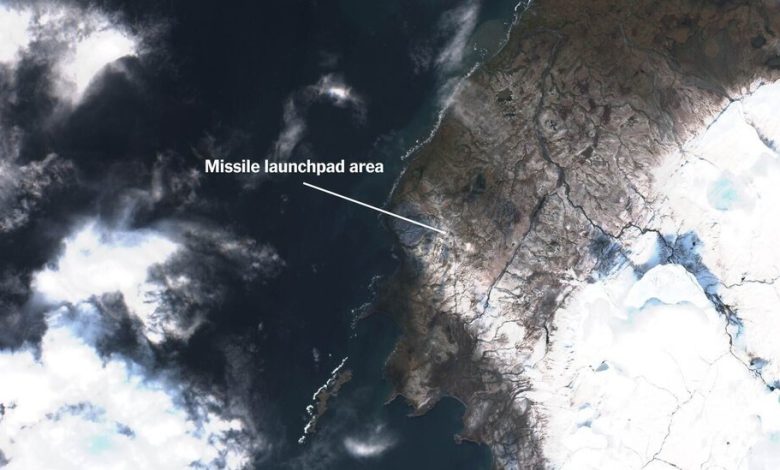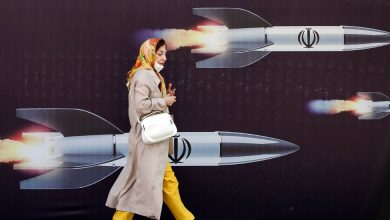Russia May Be Planning to Test a Nuclear-Powered Missile

Satellite imagery and aviation data suggest that Russia may be preparing to test an experimental nuclear-powered cruise missile— or may have recently tested one — with a theoretical range of thousands of miles.
Movements of aircraft and vehicles at and near a base in Russia’s remote Arctic region are consistent with preparations that were made for tests of the missile, known as the Burevestnik or SSC-X-9 Skyfall, in 2017 and 2018, according to a New York Times analysis.
U.S. surveillance planes have also been tracked in the area over the last two weeks, and aviation alerts have warned pilots to avoid nearby airspace.
Russia previously conducted 13 known tests between 2017 and 2019, all of which were unsuccessful, according to a report from the Nuclear Threat Initiative, a nonprofit group focused on arms control. And mishaps can be deadly. A missile launched in 2019 crashed and eventually exploded during a recovery attempt, killing seven people, according to U.S. officials.
“It is exotic — it is dangerous in its testing and development phase,” Daryl G. Kimball, executive director of the Arms Control Association, said. Whether the Burevestnik has been tested again since 2019 isn’t clear, but even with a successful launch, the missile would still be years away from “operational deployment,” Mr. Kimball added.
In previous tests, the missile failed to fly a distance anywhere close to the designed range, estimated to be around 14,000 miles. U.S. officials assessed that during its most successful test flight, lasting just more than two minutes, the missile flew 22 miles before crashing into the sea. In another test, the missile’s nuclear reactor failed to activate, causing it to go down only a few miles from the launch site. For a test to succeed, the missile’s nuclear reactor would need to initiate in flight, so that the missile can cover much more ground.
According to the Nuclear Threat Initiative report, the missile is a “second-strike, strategic-range weapon,” intended to be launched after a wave of nuclear strikes have devastated targets in Russia. The missile could carry a conventional warhead but, in practice, would likely carry a nuclear payload, albeit a smaller one than most other nuclear-capable weapons. If used in wartime, the missile could have the potential to destroy large urban areas and military targets, experts say.
While Russia has shared little about the Burevestnik’s specific design, President Vladimir V. Putin has said it is nuclear-powered. The missile is thought to be launched by a solid-fuel rocket motor before a small nuclear reactor activates in flight, theoretically allowing the missile to stay aloft indefinitely.
The Burevestnik is one of six strategic weapons, along with others such as the Kinzhal ballistic missile and the Avangard hypersonic glide vehicle, that Mr. Putin introduced in a 2018 speech. He asserted that the weapons could overpower and outmaneuver existing U.S. defenses. Addressing the West, he said, “You have failed to contain Russia.”
Visual evidence of testing preparations includes before-and-after satellite images.
Imagery taken on the morning of Sept. 20 shows numerous vehicles present on a launchpad at the base, including a truck with a trailer that appears to correspond to the dimensions of the missile. A weather shelter that typically covers the specific launch site had been moved about 50 feet. By the afternoon, the trailer was gone and the shelter was moved back to its original position.
Additional imagery captured on Sept. 28 shows the launchpad active again, with a similar trailer present and the shelter again drawn back.
On Aug. 31, the Russian authorities issued an aviation notice for a “temporary danger area,” advising pilots to avoid part of the Barents Sea off the coast and 12 miles from the launch site, known as Pankovo. The notice has since been extended several times and, as of Sunday, was scheduled to be in force through Oct. 6. Russia issued a similar notice before a Burevestnik test in 2019.
Additionally, two Russian aircraft specifically used for collecting data from missile launches were parked about 100 miles south of the launch site in early August, at the Rogachevo air base, according to analysis of satellite images by Bellona, a Norwegian environmental organization. The aircraft are owned by Rosatom, the Russian atomic energy company. They remained at that base at least through Sept. 26, according to additional satellite imagery. During Burevestnik tests in 2018, aircraft of the same type were also in the vicinity.
A U.S. Air Force reconnaissance aircraft, an RC-135W Rivet Joint, also flew at least two missions off the coast of the Arctic island where the launch site is, on Sept. 19 and Sept. 26, according to the tracking platform Flightradar24. The two missions represented a slight uptick from usual known activity.
The highly secretive nature of the Burevestnik missile initiative and the remote launch location make it difficult to determine if a test is forthcoming or if the weapon may have already been recently retested — or perhaps both. While launch tests of the Burevestnik have been conducted at the Arctic base in the past, Russia could also test just the missile’s rocket motor or a component of the missile itself.
The White House declined to comment on The Times’s findings.
Experts said the missile is dangerous not only in its ability to carry a powerful nuclear warhead but in its potential to release harmful radioactive emissions if the missile were to explode or malfunction during a test.
If put into use, the Burevestnik would be considered part of Russia’s nuclear arsenal, making it subject to a nuclear arms reduction treaty that Moscow signed in 2011. That agreement limits the total number of warheads and delivery vehicles the country can deploy.
But with the treaty, known as New START, set to expire in February 2026, the missile could contribute to “the leading edge of an uncontrolled arms race” if no new agreement were to replace the expiring treaty, Mr. Kimball said.
Ultimately, he said, a test of the missile would be a “sign that Russia is moving in the wrong direction.”
Reporting was contributed by Julian Barnes in Washington and Christoph Koettl in New York. Aaron Byrd contributed graphics production.



